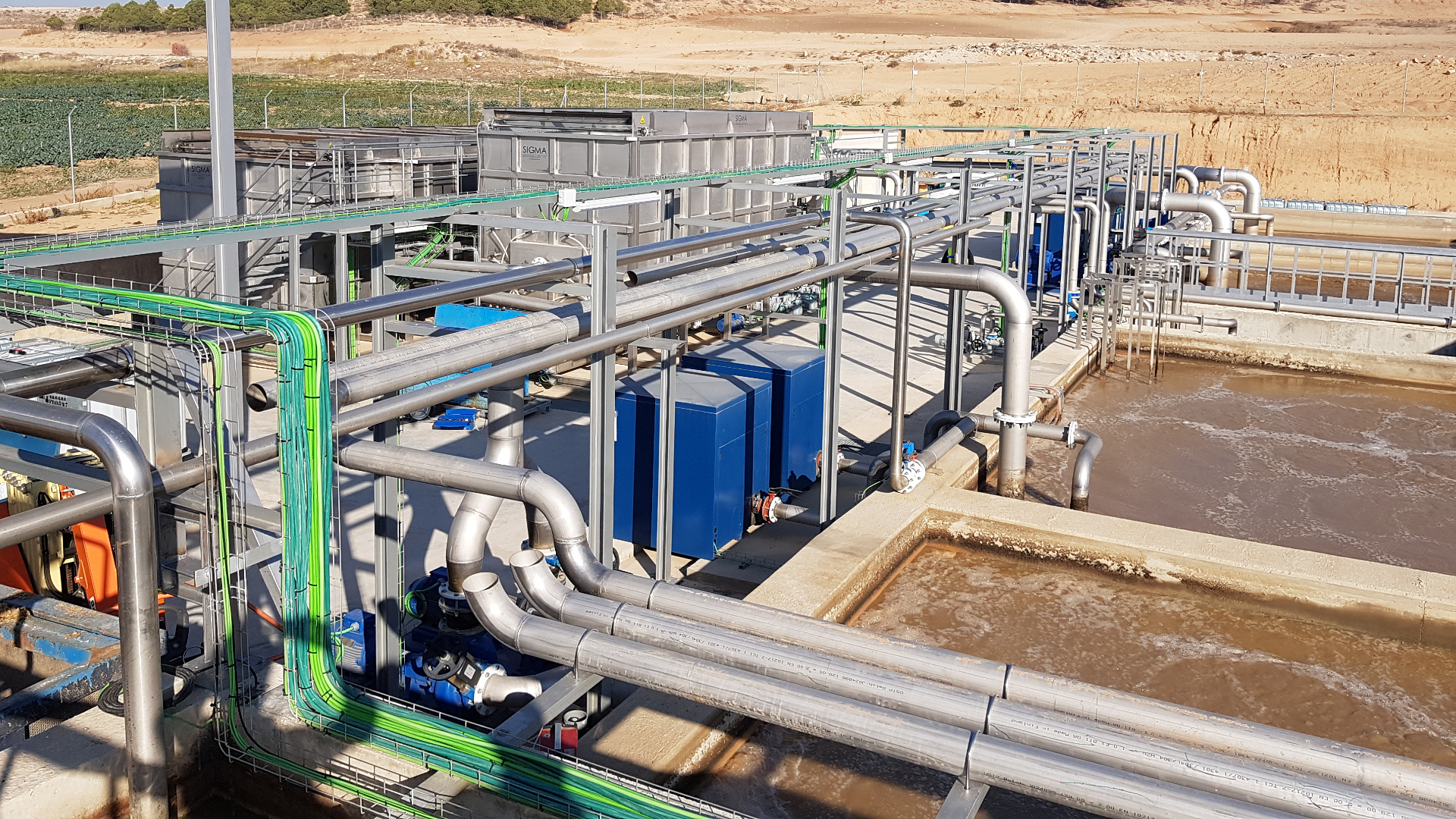
Year: 2016
Project Location: Congelados de Navarra in Fustiñana, Navarra, Spain.
Objectives: Installation of a wastewater treatment plant that allows compliance with the discharge requirements for a vegetable processing facility. The treatment plant must be flexible and adaptable to the high variability of the wastewater’s hydraulic flow and organic load.
Installed Technologies: Pump systems, screening, and sand separation; homogenization tank; anaerobic reactor SIGMA RANC; gas filter; clarifier SIGMA BIODAF-FPBC-PWF; aerobic reactor and aeration system; final clarifier SIGMA BIODAF 200-TWIN; in-line flocculation system SIGMA PFL; full sludge treatment via dewatering with a centrifugal decanter. Control and automation systems.
Capacity: 240 GPM
Wastewater Characteristics for Process Design
| COD | BOD5 | TSS | TKN-K |
|---|---|---|---|
| 15000 mg/L | 8000 mg/L | 2000mg/L | 175 mg/L |
Treatment Efficiency
| COD Removal | TSS Removal | TKN_K Removal |
|---|---|---|
| >96% | >97% | >91% |
Congelados de Navarra S.A. is a leading company in its sector. Its activity is focused on the processing of vegetables for freezing. The wastewater from the Fustiñana factory has a high load of biodegradable organic compounds; this is why a complete biological treatment plant was designed and installed to reach the discharge limits.
Two biological processes are installed in series: anaerobic digestion with a SIGMA RANC reactor and an aerobic SIGMA FBR treatment. The plant also includes a gas filtering line and complete sludge treatment. Given the seasonality of vegetable production, the plant is robust but flexible. It can adapt to production changes that impact the flow and nature of the water from the processing of very different vegetables: cauliflower, broccoli, rice, potatoes, peas, carrots, etc.
The SIGMA RANC anaerobic digestion process consists of a contact up-flow reactor, where the removal of organic compounds is carried out under anaerobic conditions, transforming COD and BOD5 mainly into biogas and very little sludge generation. The anaerobic sludge is separated by flotation clarification in the SIGMA BIODAF-FPBC-PWF system. The biogas generated is treated in a filter to remove hydrogen sulfide.
The FBR process (flotation bio-reactor) consists of an aeration reactor where biological treatment is carried out in the presence of oxygen. This biological process consists of the transformation of the organic matter that was not eliminated in the anaerobic reactor; in it, microbial flocs are generated by adsorption and agglomeration. These biomass flocs are separated by coagulation, flocculation, and secondary clarification by DAF flotation: in this process, biomass flocs are formed and separated by flotation with air micro-bubbles in a SIGMA BIODAF 200-TWIN equipment.
The flotation clarification equipment SIGMA BIODAF is special equipment that presents greater reliability against spongy sludge with low sedimentation rates, such as those typically generated in the treatment of industrial wastewater.
The sludge generated in both clarifications is treated jointly by dewatering with a centrifugal decanter.



